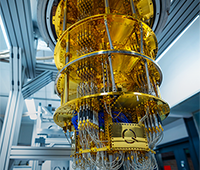 Okay, for today’s pop-quiz, what is Mobile High-Definition Link (MHL) technology and what can it do? Is it a new NASA deep space communication protocol? Is it an upgrade to Google’s street cams? Have you even heard of it?
Okay, for today’s pop-quiz, what is Mobile High-Definition Link (MHL) technology and what can it do? Is it a new NASA deep space communication protocol? Is it an upgrade to Google’s street cams? Have you even heard of it?
It turns out that many of you are equipped with devices that incorporate this technology. Specifically, many, though not all, of the current crop of smart phones and tablets support MHL. The MHL Specification, created and maintained by the MHL Consortium, defines a high-definition video and digital audio interface intended for connecting mobile smart devices, such as tablets and cell phones, with high-definition televisions and other personal entertainment products.1 The MHL Consortium consists of Nokia, Samsung Electronics, Silicon Image, Sony and Toshiba.2
In use, the MHL port normally shares the micro-USB connector used for data transfer and charging of the tablet or smart phone. The implication of this is that you cannot use this port as a USB port when it is being used as a MHL port. MHL was first demonstrated in 2008, and a formal specification was issued in 2010.3 In 2011, the first commercial mass market smart phone, the Samsung Galaxy SII was released.
There are currently three versions of this standard, with each new version adding enhanced capabilities. The features available to you will depend on the features supported by both devices, providing you with the lowest common denominator.
 A listing of MHL features includes the following:4-6
A listing of MHL features includes the following:4-6
- Transmits 1080p uncompressed HD video
- Transmits 8 channel uncompressed audio (e.g. 7.1 surround sound)
- Charges the mobile device’s battery through the MHL cable — up to 500mA for MHL 1.0, up to 900mA for MHL 2.0, and up to 10 W for HML 3.0
- High-bandwidth Digital Content Protection (HDCP) support
- The MHL mobile device can be controlled via the TV’s Consumer Electronics Control (CEC) function, where supported by the TV, by exploiting the TV remote control via the Remote Control Protocol (RCP).
- Connector agnostic, requiring as few as five pins
- Video Support for 1920x1080p60 and up to 3840x2160p30 resolutions
- Supports multiple external displays simultaneously
- MHL 3.0 supports concurrent USB data support for both storage and human interface devices (HID), including touch screens, keyboards, trackballs, mice and others
- No lag or compression when playing music, videos or gaming
- MHL specifications are backwards-compatible with all previous versions
 There are several ways to connect an MHL enabled smart phone or tablet with a video display. The most significant determinant is the type of interfaces available on the television, which we will assume is a high-definition digital unit. Given that, the available options are:
There are several ways to connect an MHL enabled smart phone or tablet with a video display. The most significant determinant is the type of interfaces available on the television, which we will assume is a high-definition digital unit. Given that, the available options are:
- If display is MHL enabled, you can connect the two by simply plugging the micro-USB connector of a passive MHL cable into the smart phone/tablet and the MHL connector end into the MHL port on the television.
- If display is not MHL enabled, but does have a HDMI (High-Definition Multimedia Interface), it can be connected with the use of a MHL-to-HDMI adapter cable.
The latter option can get a little trickier. As noted above, the MHL specification is connector agnostic. In effect, the specification defined the signals going over the various conductors, but did not specify the type of connector or pin-outs used. Initial phones used a 5-pin micro-USB connector. Unless labeled otherwise, the majority of MHL cables and adapters sold are engineered for this format. For a variety of reasons, Samsung decided to move from a 5-pin micro-USB connector to an 11-pin micro-USB connector.7 There is no difference in the form factor of these two different connectors. So, visually, they may appear identical and both meet the specification. However, if you plug a 5-pin MHL cable into a device using an 11-pin connector, it won’t work. While you can purchase MHL cables that are wired appropriately, more often a ‘standard’ 5-pin cable is used, with its micro-USB connector plugged into the female micro-USB connector of a 5-pin to 11-pin adapter. The male 11-pin micro-USB connector on this adapter is then plugged into the devices 11-pin micro-USB port.
 It is for this reason that you must carefully specify the cable you need when purchasing one. However, it is possible to cover both possibilities with one kit. A good example of a MHL to HDMI adapter is Cirago’s MHL Adapter Combo Kit for Galaxy S5 (Model Number: MHL4300, Cirago, $24.99). This kit includes both a 5-pin MHL Adapter cable and a 5-pin to 11-pin adapter. If your application requires a longer cable, they also have the MHL to HDMI Active Cable (with HDTV MHL Adapter Converter) kit, which comes with 10 feet of cable (Model Number: MHLCBL10ADPT, Cirago, $34.99).
It is for this reason that you must carefully specify the cable you need when purchasing one. However, it is possible to cover both possibilities with one kit. A good example of a MHL to HDMI adapter is Cirago’s MHL Adapter Combo Kit for Galaxy S5 (Model Number: MHL4300, Cirago, $24.99). This kit includes both a 5-pin MHL Adapter cable and a 5-pin to 11-pin adapter. If your application requires a longer cable, they also have the MHL to HDMI Active Cable (with HDTV MHL Adapter Converter) kit, which comes with 10 feet of cable (Model Number: MHLCBL10ADPT, Cirago, $34.99).
I should note that you will find many articles on the Web claiming that MHL can only be converted to HDMI. This is not strictly true, as Cirago also has a MHL to VGA Display Adapter (with HDTV MHL Adapter Converter) (Model Number: MHLVGAA, Cirago, $29.99). This kit also includes the 5-pin to 11-pin adapter tip for use with select Samsung models.
Now, determining whether your phone supports MHL is another matter. You can, of course, check your manual, assuming you still have it, though that is not always conclusive. Other than physically trying an adapter or cable to see if it works, the next best thing is to go to the MHL Consortium’s MeetMHL Web site or scan the QR code in Figure 4. Note that I’ve observed you will occasionally encounter erratic results with the QR code, depending on what you are using as your default browser.
MHL’s biggest problem is one of simple awareness. It is not so much that people don’t know if their phone supports it or not, but rather that they don’t even know what it is. This confusing situation is made even worse by the fact that this micro-USB connector is also used by other video specifications, such as the DisplayPort MyDP standard implementation called SlimPort.8
 Still, I highly recommend your pursuing this and determining whether your mobile devices support MHL. If they do, this offers you significant new capabilities, whether as an easier way to watch movies, give corporate presentations, or just play video games. Once you know you have a device that supports it and you have the appropriate cables, it is extremely easy-to-use.
Still, I highly recommend your pursuing this and determining whether your mobile devices support MHL. If they do, this offers you significant new capabilities, whether as an easier way to watch movies, give corporate presentations, or just play video games. Once you know you have a device that supports it and you have the appropriate cables, it is extremely easy-to-use.
References
1. Mobile High-Definition Link – Wikipedia. Wikipedia Free Encycl. http://en.wikipedia.org/wiki/Mobile_High-Definition_Link (accessed July 21, 2014).
2. MHL Consortium. MHL Consort. 2014; published online July 21. http://www.mhlconsortium.org/ (accessed July 21, 2014).
3. Hopping C. MHL explained — top 5 things to do with MHL – Features | Know Your Mobile. Know Your Mob. 2012; published online Sept 27. http://www.knowyourmobile.com/products/18447/mhl-explained-top-5-things-mhl (accessed Dec 23, 2014).
4. Mobile High-Definition Link (MHL) – Mobile terms glossary – GSMArena.com. GSMArena.com. http://www.gsmarena.com/glossary.php3?term=mhl (accessed Dec 23, 2014).
5. MHL technology, HD video and audio connectivity for mobile devices. Silicon Image. 2014; published online July 21. http://www.siliconimage.com/technologies/mhl/ (accessed July 21, 2014).
6. Frequently asked questions about MHL. MHL Consort. http://www.mhlconsortium.org/about/FAQs.aspx (accessed Dec 23, 2014).
7. Galaxy S3 (S III) Video Output. GalaxyMHL. http://www.galaxymhl.com/ (accessed Dec 23, 2014).
8. Agevik N. Niklas Agevik’s blog – The sad and complex state of video out on smartphones. Niklas Ageviks Blog. 2013; published online Aug 18. http://agevik.se/post/58599484370/the-sad-and-complex-state-of-video-out-on (accessed Dec 23, 2014).
John Joyce is a laboratory informatics specialist based in Richmond, VA. He may be reached at [email protected].



